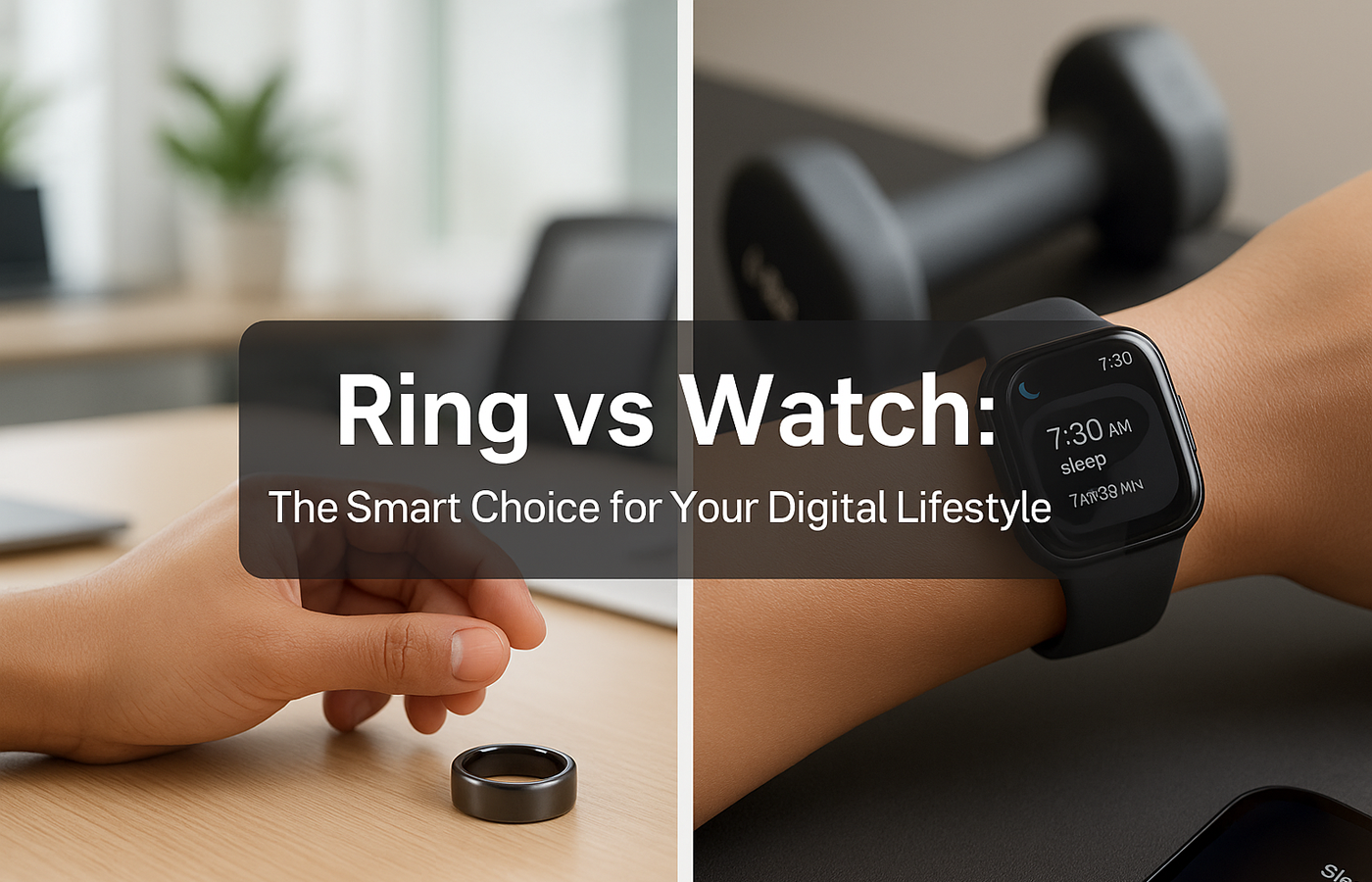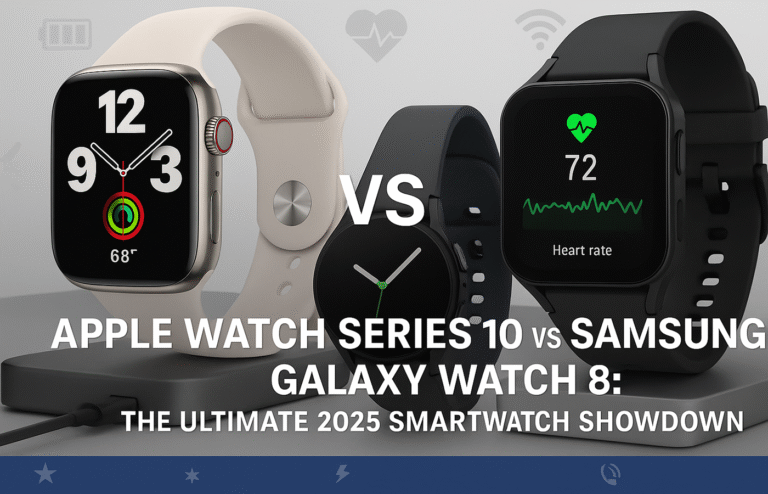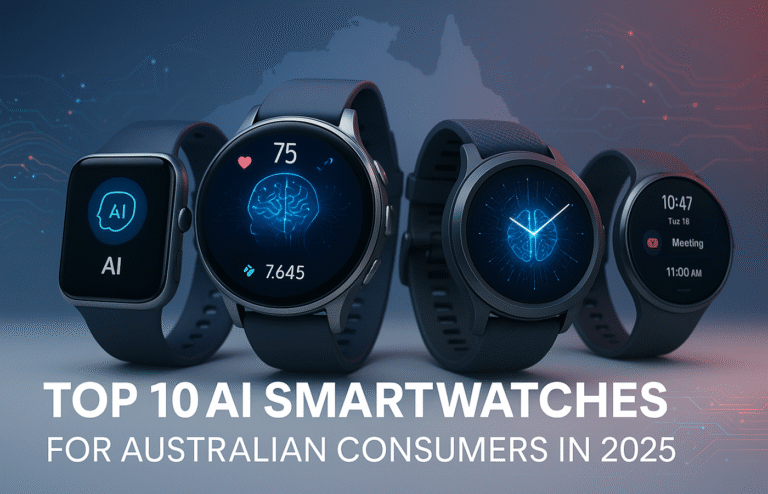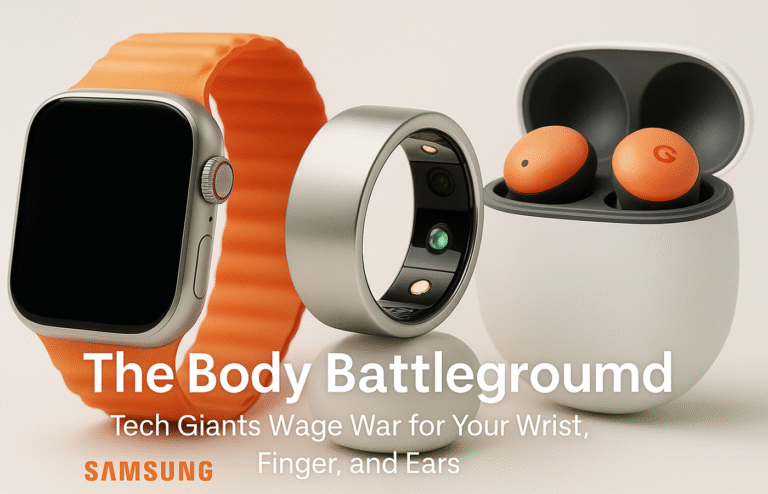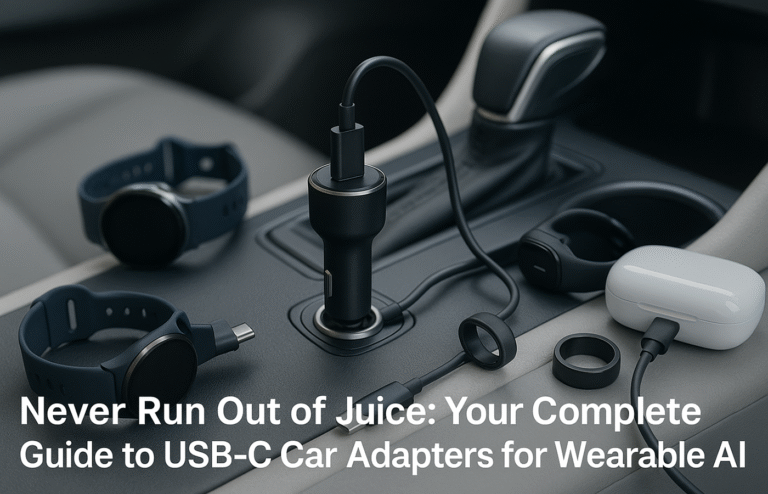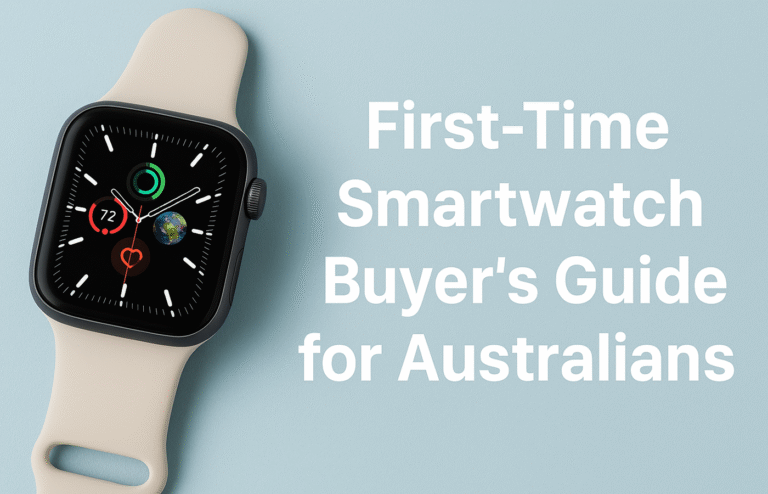Ring vs Watch: The Smart Choice for Your Digital Lifestyle
Australian professionals face a fundamental choice between discrete smart rings and comprehensive smartwatches, each offering distinct advantages for health monitoring and workplace integration.
Smart Ring Advantages:
● Professional discreteness in conservative industries
● 7-12 days battery life vs daily smartwatch charging
● Superior sleep tracking through comfortable overnight wear
● Invisible technology integration without digital distraction
Smartwatch Advantages:
● Comprehensive fitness tracking with GPS and active monitoring
● Real-time notifications and productivity features
● Quick information access and app ecosystem integration
● Emergency features like fall detection and ECG monitoring
Cost Comparison:
● Smart rings: $349-$599 AUD (some require subscriptions)
● Smartwatches: $629-$1,200+ AUD (accessory costs)
Best Choice:Smart rings suit passive health monitoring and professional environments; smartwatches excel for active fitness tracking and comprehensive digital interaction.
Ring vs Watch: The Smart Choice for Your Digital Lifestyle
The wearable technology landscape has evolved dramatically, presenting consumers with an intriguing choice between traditional smartwatches and the emerging category of smart rings. This decision extends beyond mere preference—it reflects fundamental differences in how we interact with technology, monitor our health, and present ourselves professionally. For Australian consumers navigating increasingly sophisticated workplace environments, understanding these nuances becomes crucial for making an investment that truly enhances rather than complicates daily life.
Smart rings represent a paradigm shift towards invisible technology integration, whilst smartwatches continue evolving as comprehensive digital companions. Each approach offers distinct advantages, challenging users to consider not just what they want from wearable technology, but how they want that technology to fit into their personal and professional lives.
The Discretion Advantage: Invisible vs Visible Technology
Perhaps the most compelling argument for smart rings lies in their inherent discreteness. Unlike smartwatches, which announce their presence with screens, notifications, and distinctive designs, smart rings operate virtually invisibly. The Samsung Galaxy Ring, Oura Ring 4, and other leading models blend seamlessly into professional environments where overt technology might seem inappropriate or distracting.
This discreteness proves particularly valuable in Australia’s diverse professional landscape. In conservative industries such as law, finance, or healthcare, a sleek titanium band appears far more professional than even the most elegant smartwatch. Client-facing roles benefit enormously from this subtlety—a property lawyer conducting negotiations or a financial advisor meeting with high-net-worth clients can monitor their stress levels and health metrics without drawing attention to their technology usage.
The psychological benefits extend beyond mere appearance. Smart rings eliminate the constant visual reminder of digital connectivity that smartwatches provide. Users report feeling less compelled to check notifications or interact with apps, leading to improved focus during important meetings or personal conversations. This “out of sight, out of mind” approach appeals to professionals seeking technology benefits without digital distraction.
However, this discreteness comes with trade-offs. The absence of a visual interface means users must rely entirely on smartphone apps to interpret their data. Quick glances at fitness progress, time checks, or notification previews—all staples of smartwatch functionality—become impossible with smart rings. For users accustomed to at-a-glance information access, this limitation can feel restrictive.
Battery Life: The Freedom of Extended Use
Smart rings deliver substantially superior battery performance compared to traditional smartwatches, fundamentally changing the user experience around charging routines. Most quality smart rings, including the RingConn Gen 2 and Ultrahuman Ring Air, provide 7-12 days of continuous operation on a single charge. This extended endurance eliminates the daily charging anxiety that plagues many smartwatch users.
For Australian lifestyles, this difference proves particularly significant. Business travellers can embark on week-long trips without packing additional charging cables. Outdoor enthusiasts can monitor their health metrics during extended camping or hiking expeditions without worrying about power management. Healthcare workers pulling long shifts can rely on continuous monitoring throughout demanding schedules.
The charging experience itself differs markedly between device types. Smart rings typically utilise compact charging cases—similar to wireless earbuds—that store multiple charges and protect the device during travel. This approach proves more convenient than the charging pucks or cables required by smartwatches, which can be easily forgotten or lost during travel.
Smartwatches, conversely, generally require daily charging, though some premium models like the Apple Watch Ultra extend this to 36 hours. The recent introduction of fast-charging capabilities helps mitigate this limitation—the Apple Watch Series 10 achieves 80% charge in just 30 minutes—but still requires routine attention that smart rings simply eliminate.
Health Tracking: Depth vs Breadth
The health monitoring capabilities of smart rings and smartwatches take fundamentally different approaches, each excelling in distinct areas. Smart rings leverage their intimate finger placement to deliver exceptionally accurate passive health metrics. The consistent skin contact and strategic positioning enable precise heart rate monitoring, sleep stage analysis, and body temperature tracking throughout the night.
Modern smart rings like the Oura Ring 4 and Samsung Galaxy Ring offer impressive health insights despite their compact form factor. Heart rate variability tracking, sleep quality analysis, and recovery recommendations rival those of premium smartwatches. The Samsung Galaxy Ring adds innovative features like Energy Score calculations and stress monitoring, providing holistic wellness insights without requiring active user engagement.
Sleep tracking represents a particular strength for smart rings. Their lightweight, comfortable design makes overnight wear effortless, whilst smartwatches often prove too bulky or uncomfortable for extended sleep monitoring. The superior battery life ensures consistent overnight tracking without interruption for charging, providing more complete sleep data over time.
However, smartwatches excel in active health monitoring and real-time feedback. GPS tracking for running routes, automatic workout detection, and comprehensive exercise metrics remain smartwatch advantages. Features like ECG monitoring, blood oxygen sensing (where available), and fall detection require the additional sensors and processing power that smartwatches provide.
For Australian users prioritising preventive health monitoring and sleep optimisation, smart rings offer compelling advantages. Professionals seeking comprehensive fitness tracking, emergency features, or medical-grade health monitoring may find smartwatches more suitable despite their limitations.
Professional Environment Integration
The Australian workplace presents unique considerations for wearable technology adoption. In formal business environments, smart rings offer significant advantages through their professional appearance and minimal distraction potential. A titanium smart ring appears indistinguishable from traditional jewellery, avoiding any perception of inappropriate technology use during client meetings or formal presentations.
Smart rings particularly excel in environments where screen-based devices face restrictions or social disapproval. Healthcare settings, where hygiene protocols limit jewellery, may permit smooth, easily cleanable smart rings whilst prohibiting smartwatches. Legal environments, where attention must remain focused on proceedings, benefit from technology that operates invisibly without tempting users to check notifications or time.
The notification management approach differs significantly between device types. Smartwatches deliver immediate visual and haptic alerts, which can prove disruptive during important conversations or presentations. Smart rings provide subtle vibration alerts that remain private and less intrusive, though this approach may cause users to miss important communications.
However, smartwatches offer professional advantages that smart rings cannot match. Calendar integration, quick email previews, and meeting reminders provide legitimate productivity benefits for busy professionals. The ability to discretely check messages during meetings—whilst potentially rude—can prove practically necessary for executives managing multiple priorities.
Australian workplace culture generally embraces technology adoption, particularly devices that enhance productivity or health monitoring. However, the choice between rings and watches often depends on specific industry norms and personal comfort with visible technology displays.
Lifestyle Compatibility and Daily Integration
The choice between smart rings and smartwatches often hinges on fundamental lifestyle preferences and daily routines. Smart rings appeal to users seeking passive health monitoring without active device interaction. This approach suits professionals who want health insights but prefer minimal technology intrusion in their daily activities.
Smart rings excel for users with consistent sleep schedules who value comprehensive rest monitoring. The comfortable overnight wear and extended battery life provide detailed sleep analytics without lifestyle disruption. This proves particularly valuable for shift workers, frequent travellers, or anyone prioritising sleep optimisation for health or performance reasons.
Conversely, smartwatches suit users who actively engage with technology throughout their day. Features like music control, GPS navigation, app notifications, and voice assistance require the comprehensive interface that only smartwatches provide. Active fitness enthusiasts, technology early adopters, and users who appreciate device versatility generally prefer smartwatch functionality.
The maintenance requirements differ substantially between device types. Smart rings require minimal daily attention—users often forget they’re wearing them—whilst smartwatches demand regular charging, app updates, and active management. This difference appeals to users seeking “set and forget” technology versus those who enjoy customising and optimising their devices.
Cost Considerations and Value Proposition
The financial investment required for quality wearable technology varies significantly between smart rings and smartwatches, with each category presenting distinct value propositions. Premium smart rings typically range from $349 AUD (Samsung Galaxy Ring) to $599 AUD (Oura Ring 4 with subscription), whilst flagship smartwatches span from $629 AUD (Apple Watch Series 10) to over $1,200 AUD for premium models.
However, the total cost of ownership tells a more complex story. Many smart rings, including Samsung’s offering, provide full functionality without ongoing subscription fees. Others, like the Oura Ring, require monthly subscriptions ($8.99 AUD monthly) for access to advanced insights and recommendations. These recurring costs can substantially increase the long-term investment.
Smartwatches generally avoid subscription requirements but may incur accessory costs through replacement bands, screen protectors, or charging accessories. The broader ecosystem of compatible accessories provides customisation options but adds to the overall investment.
For Australian consumers, local warranty support and service availability influence long-term value. Apple’s extensive local presence ensures reliable support for Apple Watch users, whilst smart ring manufacturers may offer limited local service options. Samsung’s growing Australian presence improves support for Galaxy Ring users, though the newer category lacks the established service networks of traditional smartwatch brands.
Future-Proofing and Technology Evolution
The wearable technology landscape continues evolving rapidly, making future-proofing considerations crucial for any significant investment. Smartwatches benefit from established ecosystems, regular software updates, and clear upgrade paths. Apple Watch users can expect 4-5 years of major updates, whilst Samsung typically provides 3-4 years of support for Galaxy Watch models.
Smart rings occupy a newer market position with less predictable long-term support. However, their simpler functionality may extend useful lifecycles beyond more complex smartwatches. The absence of displays, complex operating systems, and extensive app ecosystems reduces potential obsolescence factors.
Battery degradation affects both device types differently. Smartwatch batteries, subjected to daily charging cycles, typically degrade more rapidly than smart ring batteries with weekly charging patterns. However, smartwatch batteries are often user-replaceable through service channels, whilst smart ring batteries may require complete device replacement.
The AI integration trajectory favours both device types, though implementation differs. Smartwatches can leverage on-device processing and sophisticated interfaces for AI features, whilst smart rings rely on smartphone connectivity and cloud processing. This difference may influence long-term capability development as AI features become more central to wearable functionality.
Making the Right Choice for Your Lifestyle
The decision between smart rings and smartwatches ultimately depends on individual priorities, lifestyle requirements, and technology preferences. Neither option represents a universally superior choice—each excels in specific use cases whilst falling short in others.
Choose a smart ring if:
- Professional discreteness is paramount
- Sleep monitoring and passive health tracking are primary goals
- Extended battery life eliminates charging concerns
- Minimal technology interaction appeals to your lifestyle
- Traditional watch wearing preferences persist
- Subscription-free operation (with Samsung Galaxy Ring) provides better value
Choose a smartwatch if:
- Active fitness tracking and GPS capabilities are essential
- Comprehensive notification management enhances productivity
- Quick information access improves daily efficiency
- Technology interaction and customisation appeal to your preferences
- Established ecosystem integration (Apple, Samsung, Google) provides added value
- Emergency features like fall detection enhance personal safety
For many Australian professionals, the optimal solution may involve both device types serving different purposes—a discrete smart ring for continuous health monitoring and professional settings, complemented by a smartwatch for active fitness tracking and comprehensive smart features.
The wearable technology market’s continued evolution suggests that current limitations may diminish over time. Smart rings will likely gain additional capabilities, whilst smartwatches may improve battery life and reduce obtrusiveness. However, the fundamental philosophical differences between passive and active wearable technology will likely persist, making the choice a reflection of personal technology preferences rather than purely functional requirements.
Both smart rings and smartwatches represent mature, capable technologies that enhance health monitoring and lifestyle management. The key lies in honestly assessing your daily routines, professional requirements, and technology interaction preferences to select the device that truly complements rather than complicates your digital lifestyle.

